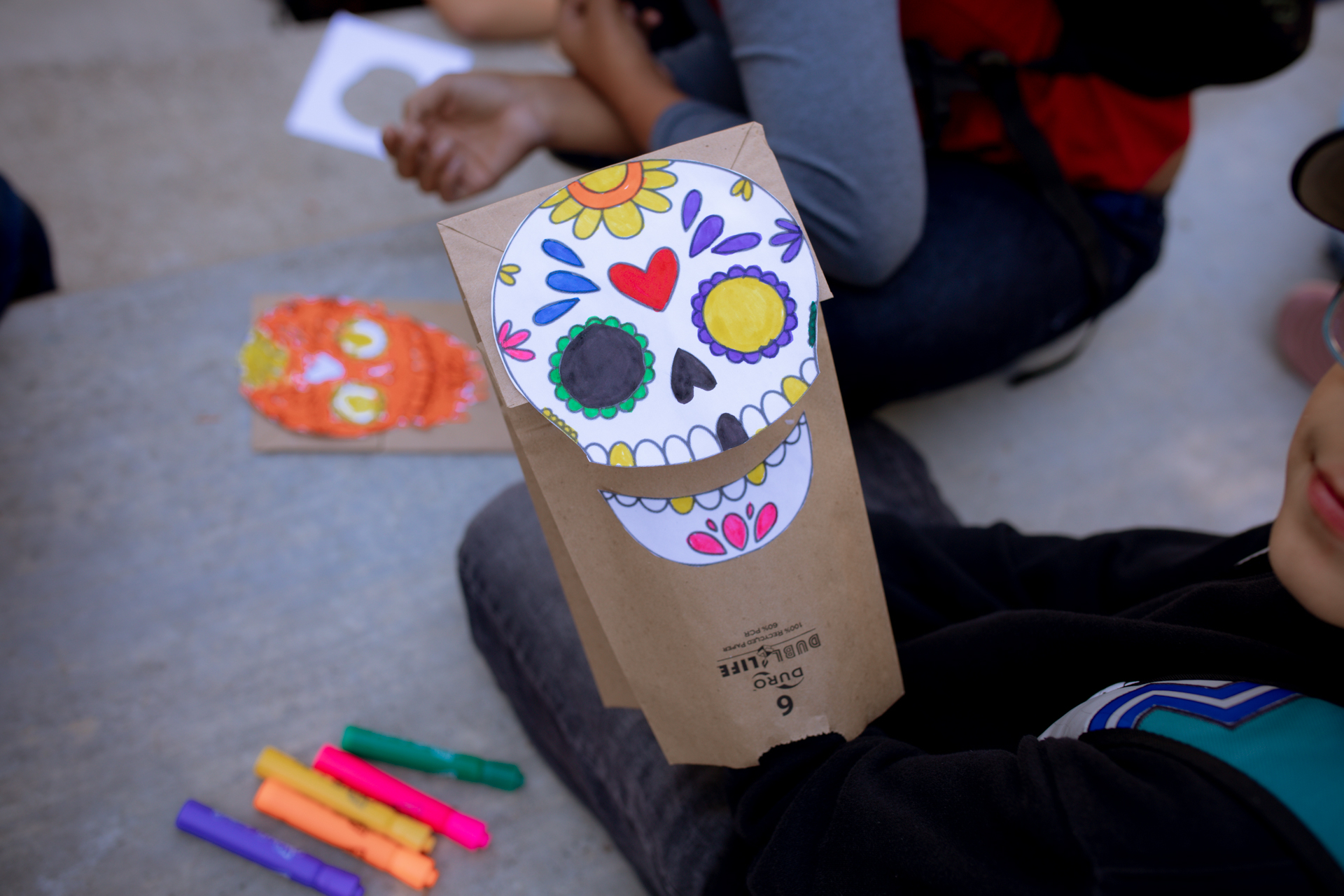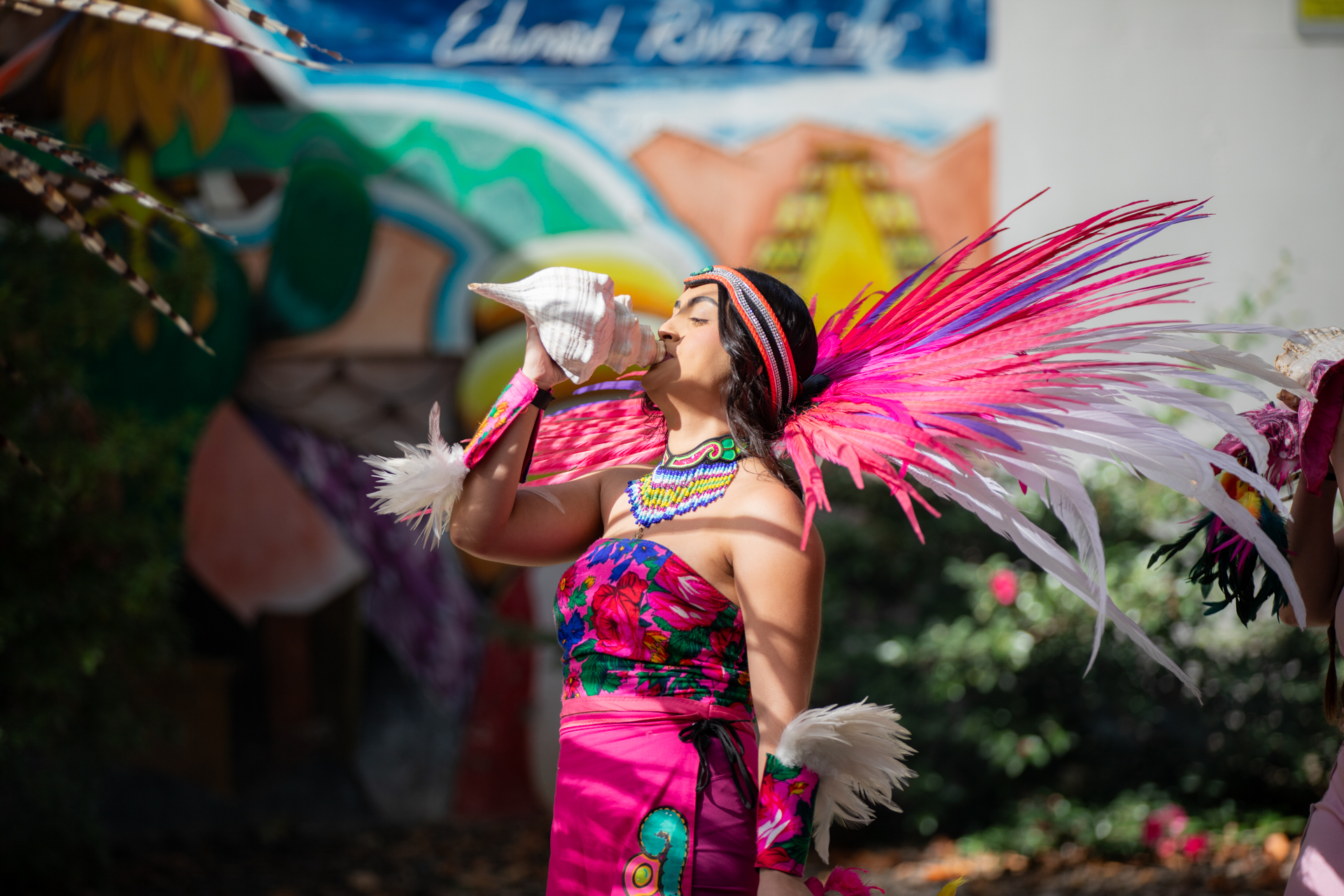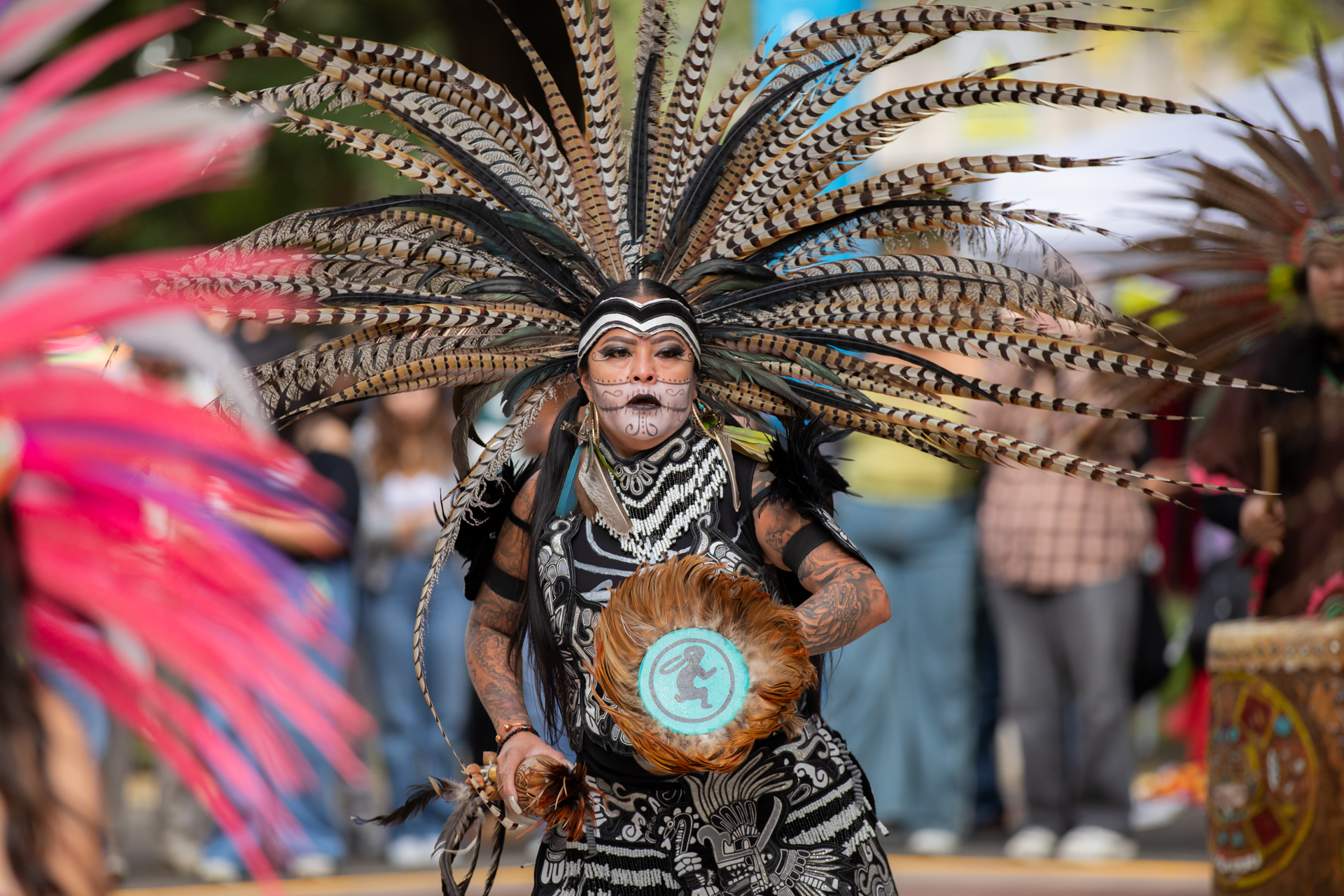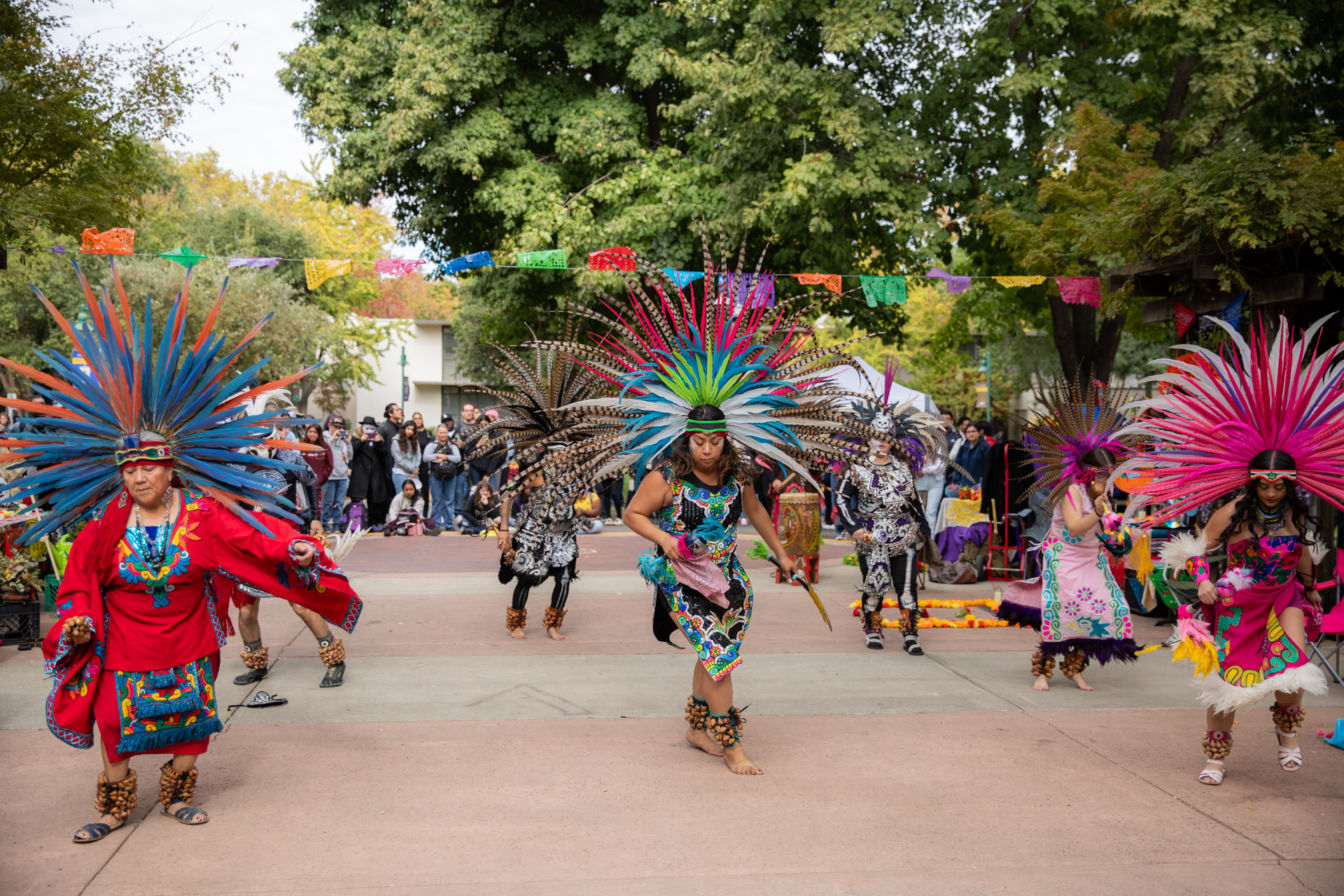Story Content
Sac State welcomes local students for campus Día de los Muertos celebrations

November 01, 2024
Nearly 60 fourth- and fifth-graders sat on the steps leading to the Guy West Bridge on Tuesday, colorfully decorating sugar skull outlines to turn into puppets.
The students were encouraged to later place a picture of a deceased relative beneath the skull so they could position the puppet on the altar at their school or home, an important tradition during the Día de Los Muertos holiday.
The campus visit from Washington Elementary School was the latest engagement activity connected to Assistant Professor of Art Luis Garcia’s “Barrio Art in the Community” class. It was timed to coincide with Sac State celebration of Día de los Muertos.
“Tapping into their assets, of people in their families or friends that they want to honor, is a big part of (Barrio Art),” Garcia said. “It takes on a nontraditional approach to art, to education, where students bring in their familial knowledge for something small, like this.”
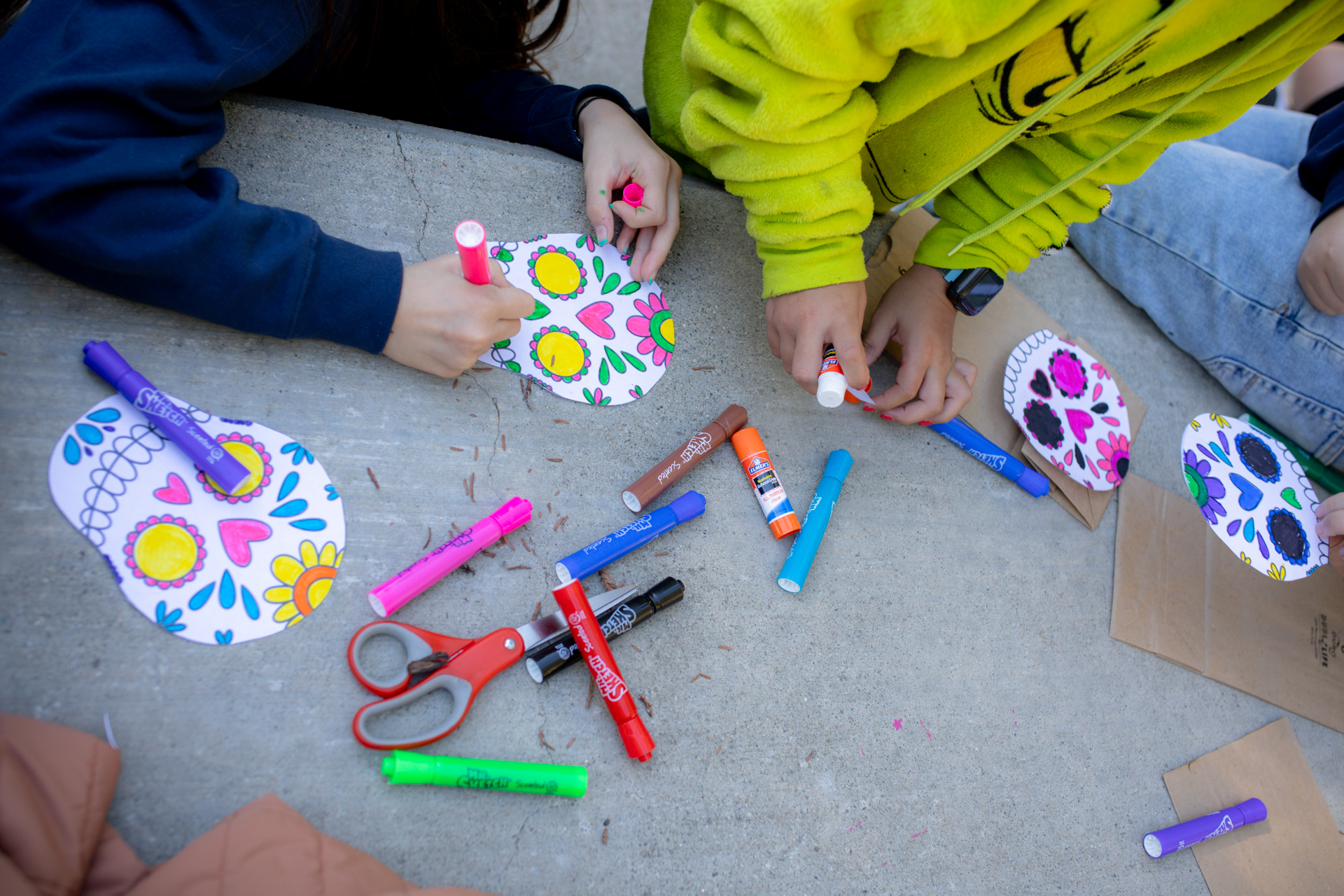
In addition to the Washington Elementary visit, Garcia’s class welcomed students from Hiram Johnson Adult High School, who participated in Wednesday’s Día de Los Muertos parade and subsequent workshops on the Library Quad.
Día de los Muertos, or Day of the Dead, is a widely celebrated tradition in Mexican and Central American communities, Oct. 28 – Nov. 2, in which family and friends gather to pay respects to deceased loved ones. Following the procession from the front of campus to the Library Quad, Sac State’s celebration featured a catrina fashion show, theatrical performance and marigold ceremony. The catrina – a female skeleton – and marigolds are important symbols of the holiday.
Garcia collaborated with Ethnic Studies professors Jason Tena-Encarnacion, Nancy Huante and David Flores on the celebration and said their participation over the past two years has helped the annual tradition grow and flourish.
Lilia Contreras, the University’s Hispanic-Serving Institution director, said the holiday is a way to “connect with our roots but also with each other.”
“Día de los Muertos is an important celebration because it brings people together, fostering a sense of community and belonging,” she said. “On campus, this tradition can transform the space into a welcoming home away from home, as students, staff and community members come together to honor and pay tribute to their ancestors and loved ones.”
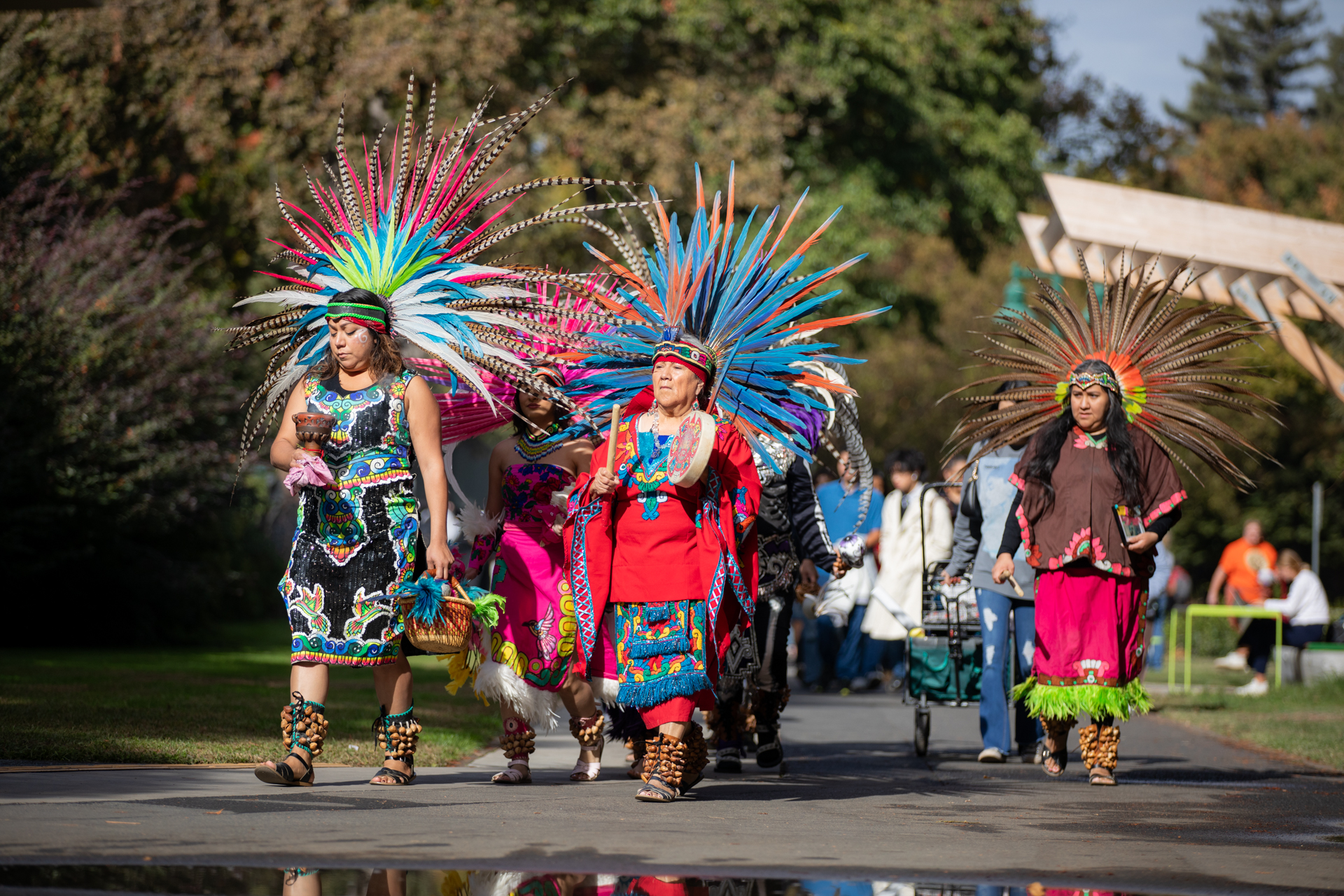
Sac State is a federally recognized Hispanic-Serving Institution and recipient of the prestigious Seal of Excelencia for its commitment to serving Latine students. Approximately 38% of all Sac State students identify as Hispanic or Latine.
The idea behind Garcia’s “Barrio Art” course is to teach students how to use art to better engage and learn from the communities they serve. Course enrollees are often aspiring teachers and learn how to develop curriculum that draws upon what Garcia calls students’ “funds of knowledge” – the unique experiences and perspectives they bring to the classroom as individuals.
Tuesday marked the third time Garcia has brought Washington Elementary students to Sac State, exposing them to life on a college campus. In addition to the sugar skull decorating, they also toured the University vivarium and watched a show at the planetarium. Garcia also showed them the altares – altars – set up in the Library Quad, which will be on display through Nov. 3.
Andres Alvarez, an Open University student taking “Barrio Art” as a prerequisite to entering a Sac State graduate program, was among several of his classmates helping the Washington Elementary students with their art projects. As someone who hopes to pursue both art and teaching, he embraces the ethos behind the class.
“It's a reminder that teaching isn't a solitary thing. It's not just engagement in a classroom. It's not one person dictating information to a group of many,” he said. “It really is learning about who is part of the community, what the interests are, what the history is, and then incorporating that information and knowledge in the classroom. So then in a sense, everybody becomes a teacher.”
Editor's Pick
Media Resources
Faculty/Staff Resources
Looking for a Faculty Expert?
Contact University Communications
(916) 217-8366
communications@csus.edu
